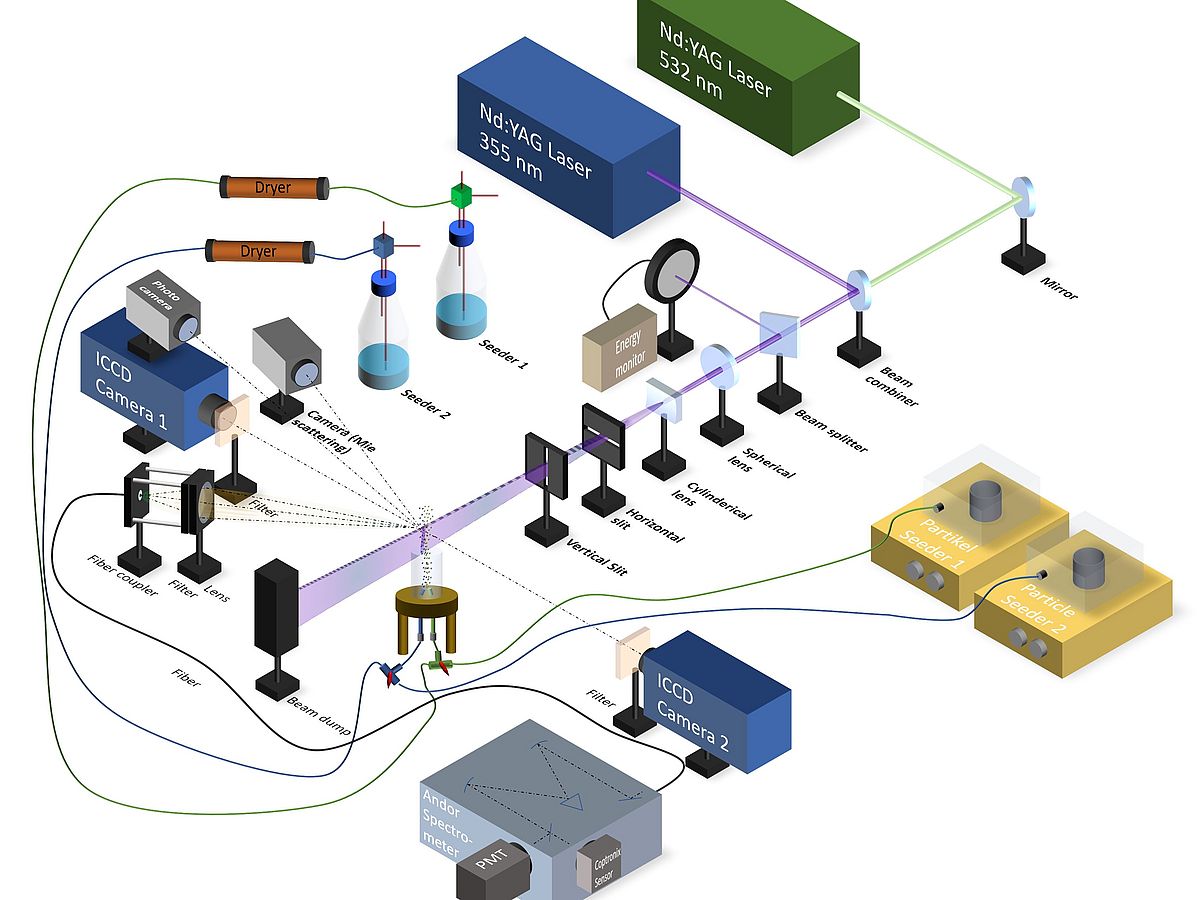Laser-optical in situ detection and imaging of gas-borne heteroaggregate formation

Project Leader :
Dr. rer. nat. Torsten Endres
University of Duisburg-Essen
Despite the practical relevance of heteroaggregates for a multitude of applications, there are no established methods to detect heteroaggregation in situ in the gas phase. Therefore, the focus of this project is to develop and evaluate suitable optical methods for selective detection of heteroaggregates AB in combination of detection of the individual constituents A and B to enable a quantitative determination of the degree of heteroaggregation in the aerosol phase with the capability of imaging measurements in extended areas. In a first step, a model flow configuration will be realized that is highly flexible for using particles from various sources forming heteroaggregates after variable interaction times.
Direct mixing of existing particle systems in the gas-phase to generate heteroaggregates will be used. Then the project aims to develop, test, and validate various optical in situ detection strategies for monitoring heteroaggregation of particles in the gas phase with imaging capabilities.
Three different approaches that take advantage of energy transfer in between A and B particle classes to generate a signal that is selective for the presence of hetero contacts will be exploited: (i) Laser heating from A, which induced thermal energy transfer to B in case of heteroaggregation and subsequent temperature rise of B which is measured with thermographic phosphors. (ii) Contact-sensitive interaction between fluorophores in A and B, both through Förster resonant energy transfer (FRET) and using ion-sensitive indicator fluorophores. (iii) Using a combination of LII (laser-induced incandescence) and LIBS (laser-induced breakdown spectroscopy) to generate a characteristic signal that enables selective detection of A and B.
Further, hetero¬aggregation changes the fluence dependence of these processes, which enables selective detection of AB aggregates.To validate the developed measurement methods, the results need to be confirmed by sampling and subsequent ex situ analyses. Two sampling strategies will be applied. Samples will be extracted from various areas within the mixing zone using a pneumatically-driven sampler and filtration from the downstream gas of our aerosol mixing chamber. There is close collaboration planned with several partner projects within the SPP 2289 in the field of synthesis, simulation, and ex situ sampling.

